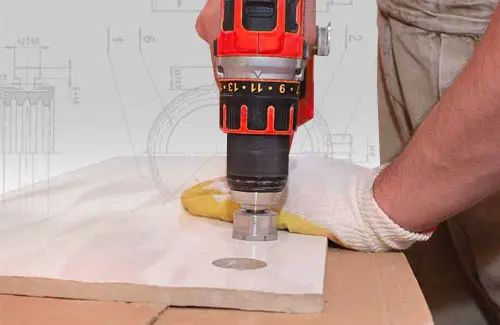The regular price is the current manufacturer's recommended price! FREE shipping for orders over EUR 41,67 within CZ+SK (PPLparcel)

Learn 4 drilling tips that will help you do everything perfectly.
1) Forget about hammering
A fundamental mistake that in most cases really causes the tiles to crack is using a hammer. If you want to avoid cracking the tiles, always drill without using a hammer and at low speed. If you can't create a hole of the desired diameter in the tile even after minutes of frantic drilling, change the drill bit to a harder and sharper one. The moment you drill through the tiles, you can increase the speed.
2) Choose a suitable diamond core bit or drill bit
Before you start drilling, measure everything thoroughly and mark the locations of the future holes with a marker. Another option is to stick a piece of adhesive tape on the tile and drill the hole through it. The drill or core bit will then not slip, so you can easily hit the exact spot you want. If you have a choice, prefer drilling in the joint to drilling holes in the tile surface. A drill guide with a suction cup is also a great helper, which is designed for precise drilling and prevents the core bit or drill from slipping out of position.
Ordinary drill bits designed for drilling into concrete and other hard materials are not suitable for drilling into ceramic tiles and paving stones. The best option is a diamond core bit, which ensures safe drilling through ceramics. Thanks to the diamond part, the fragile ceramics are gradually abraded and in a few seconds you will have a hole of the desired diameter. The core bit drills with a very fast and clean cut without much damage to the surface of the material. It is usually used for drilling larger holes for switches or sockets. However, it is also available in smaller diameters, making it suitable for drilling small holes for dowels. It is available with different types of clamping - hexagon or M14 thread for angle grinders.


3) Cool and regularly remove dust
It is important to find out whether the drill or crown is primarily intended for dry or wet drilling. When drilling hard material, the drill heats up considerably due to friction, and therefore it is necessary to cool it.
Drilling dust should be removed regularly, because dirt can cause various problems during drilling - from inaccurate drilling to cracking of the tile.
4) Do not press on the drill
Let the tool do the work for you. There is no need to apply pressure to the tile with the drill, as there is a risk of cracking. Be patient and drill for a few seconds longer.
Other articles:
Testy vrtáků s novou geometrií